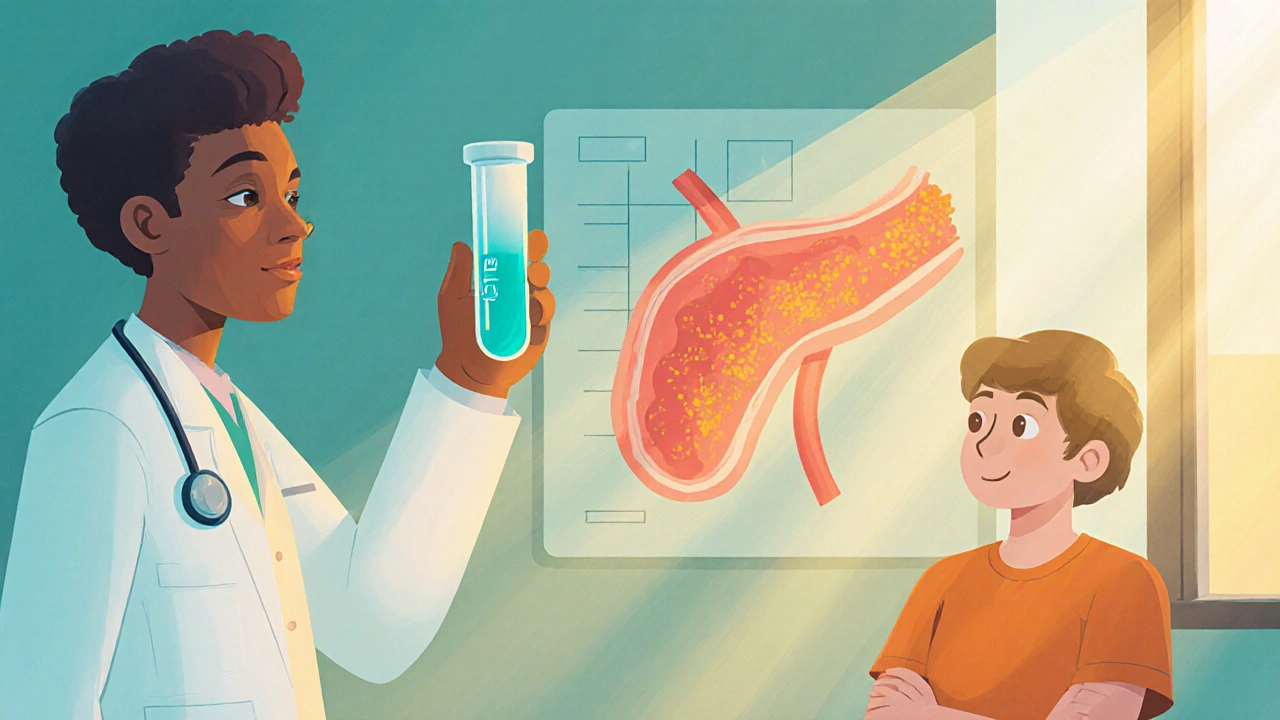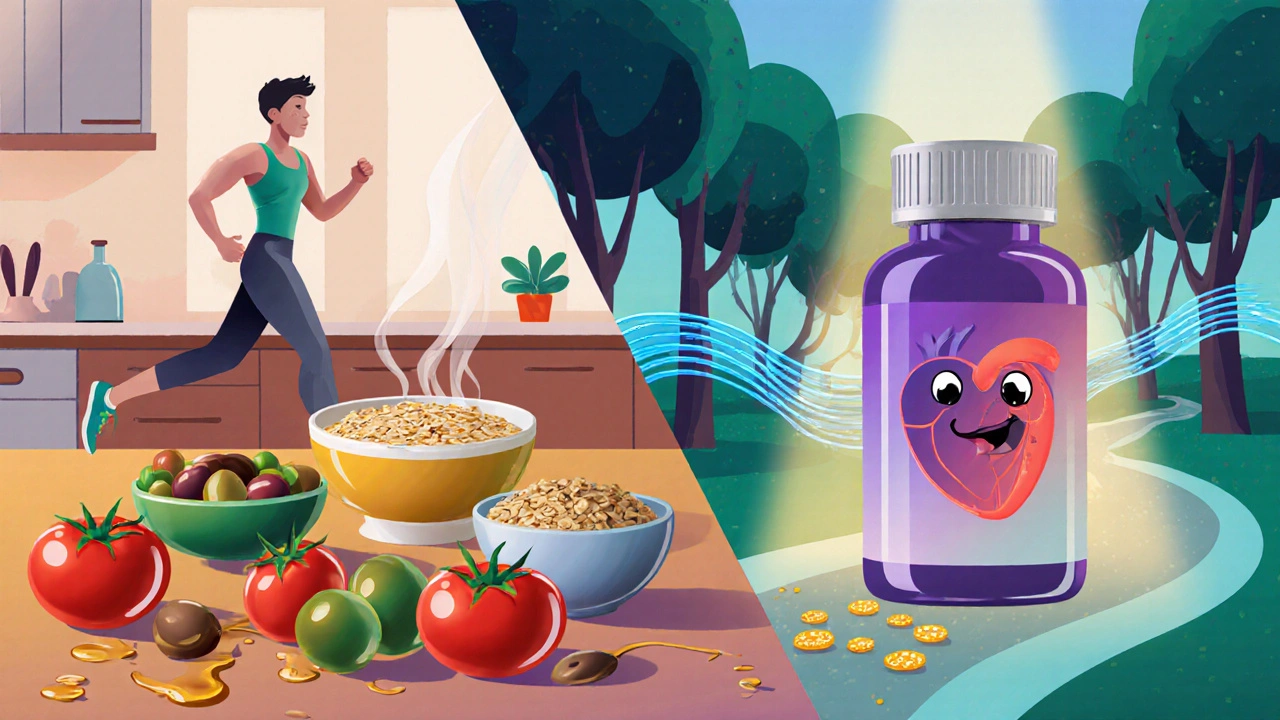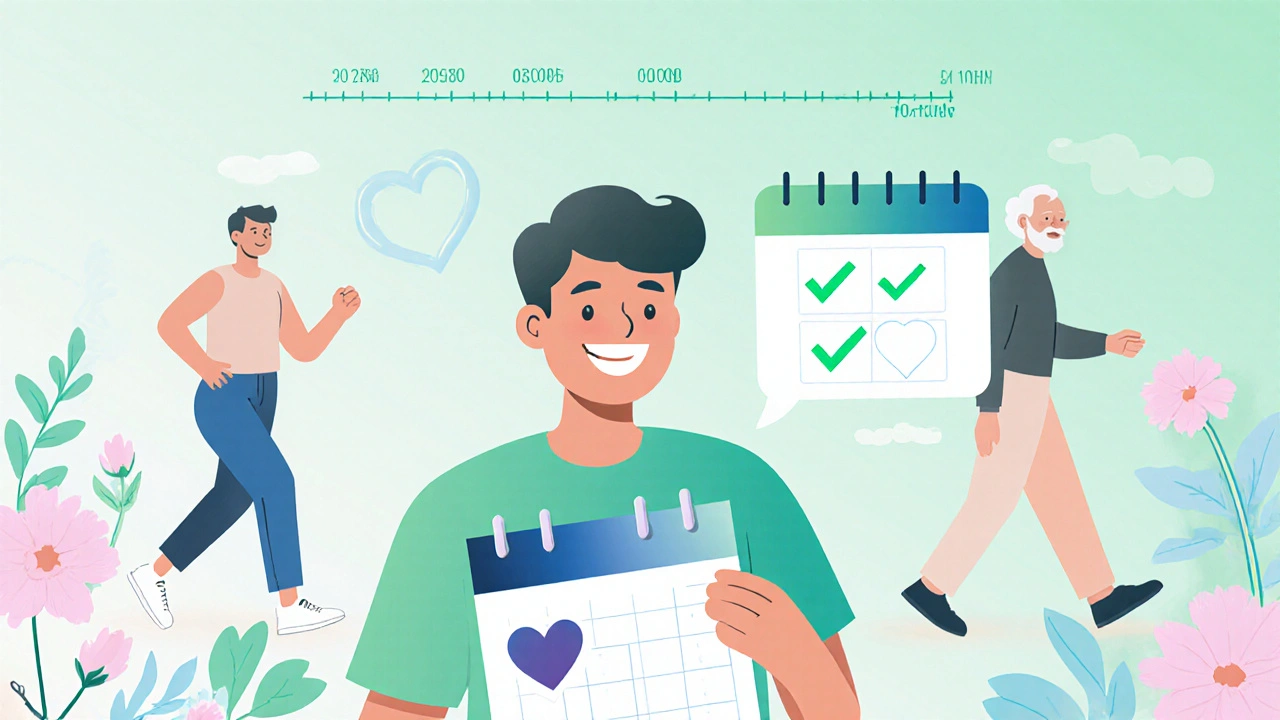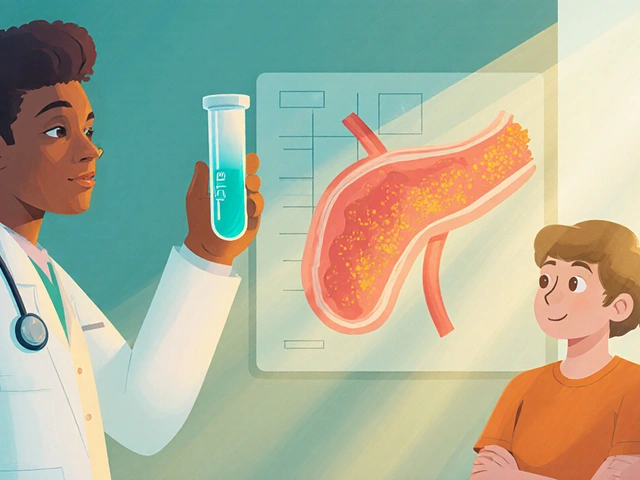Why Early Detection & Treatment of Hypercholesterolemia Saves Lives

LDL Cholesterol Reduction Calculator
Cholesterol Risk Reduction Calculator
Potential Cardiovascular Risk Reduction
Enter your values to see risk reduction estimates
When blood tests reveal a silent rise in bad cholesterol, the window to act can close quickly. Catching hypercholesterolemia early isn’t just a medical nicety-it’s a proven way to slash heart‑attack and stroke risk before symptoms ever appear.
What is Hypercholesterolemia?
Hypercholesterolemia is a condition where the level of cholesterol in the bloodstream stays higher than recommended for a prolonged period. Cholesterol itself is a waxy, fat‑like substance that the body needs for cell membranes and hormone production, but too much, especially low‑density lipoprotein (LDL cholesterol), builds up on artery walls and forms plaque.
When plaque hardens-called atherosclerosis-it narrows arteries, raises blood pressure, and sets the stage for heart attacks or strokes. The good news is that both lifestyle tweaks and medication can reverse or at least halt this process, but only if doctors know the problem early enough.
Why Early Detection Matters
Statistical models from the American Heart Association show that each 1 mmol/L (about 39 mg/dL) drop in LDL cholesterol reduces major cardiovascular events by roughly 20 %. That means the earlier you catch a high LDL level, the more you can push that number down before damage accumulates.
Early detection also opens the door to non‑drug options. Young adults with borderline high cholesterol often respond well to diet and exercise alone, avoiding lifelong medication and its potential side effects. Waiting until cholesterol is astronomically high usually forces clinicians to start high‑intensity statins right away, limiting flexibility later.
Screening Tests and Guidelines
The standard screening tool is the fasting blood lipid panel. It measures total cholesterol, LDL, high‑density lipoprotein (HDL cholesterol), and triglycerides. Current U.S. Preventive Services Task Force (USPSTF) recommendations advocate:
- Screening adults aged 20‑39 years with risk factors (family history, obesity, diabetes).
- Universal screening for everyone 40 years and older.
- Repeating tests every 4‑6 years if initial results are normal.
For people with a known family history of familial hypercholesterolemia, genetic testing is advised as early as age 2 to guide aggressive management.
Treatment Pathways: From Lifestyle to Medication
Once a high cholesterol reading is confirmed, clinicians usually follow a stepwise approach:
- Assess overall cardiovascular risk using tools like the ASCVD risk calculator.
- Implement lifestyle modifications for at least 3 months.
- Re‑measure lipid levels. If LDL remains above target, add medication.
- Periodically re‑evaluate therapy effectiveness and side‑effects.
This algorithm ensures that medication is reserved for those who truly need it while giving everyone a chance to improve through diet and activity.

Lifestyle Interventions That Work
Nutrition, exercise, and weight control are the three pillars of non‑pharmacologic therapy.
- Dietary changes: Swap saturated fats (red meat, butter) for unsaturated fats (olive oil, nuts). The Mediterranean diet, rich in fish, fruits, veg, and whole grains, can lower LDL by 5‑15 %.
- Increase soluble fiber (oats, barley, beans). Fiber binds cholesterol in the gut, reducing absorption.
- Limit dietary cholesterol to under 300 mg per day, although recent guidelines note that saturated fat has a bigger impact.
- Physical activity: Aim for 150 minutes of moderate‑intensity aerobic exercise per week. Exercise raises HDL and improves LDL particle size, making it less atherogenic.
- Weight loss: Every 10 lb (4.5 kg) shed can drop LDL by about 5 %.
Smoking cessation and moderating alcohol also play a role, as both affect HDL levels and overall heart health.
Medication Options: Choosing the Right Tool
If lifestyle alone doesn’t hit the LDL target (often <130 mg/dL for low‑risk adults, <100 mg/dL for high‑risk), doctors turn to drugs. Below is a quick snapshot of the most common choices.
| Option | Mechanism | Typical LDL Reduction | Common Side Effects | Cost (US$ per month) |
|---|---|---|---|---|
| Statins | Inhibit HMG‑CoA reductase (cholesterol synthesis) | 30‑55 % | Muscle aches, liver enzyme elevation | 5‑30 (generic) |
| Ezetimibe | Blocks intestinal cholesterol absorption | 15‑20 % | GI upset, rare liver effects | 45‑70 |
| PCSK9 inhibitors | Monoclonal antibodies that increase LDL‑receptor recycling | 50‑70 % | Injection site reactions, flu‑like symptoms | 1,200‑1,400 (insurance‑dependent) |
| Niacin | Reduces hepatic VLDL production, raises HDL | 5‑15 % (LDL) | Flushing, glucose intolerance | 30‑50 |
| Lifestyle alone | Diet, exercise, weight loss | 5‑15 % | None | 0 |
Choosing a regimen depends on baseline LDL, overall risk score, tolerance, and cost. For most patients, a moderate‑intensity statin is first‑line; add ezetimibe or a PCSK9 inhibitor if targets aren’t met.
Monitoring and Follow‑Up
After starting treatment, the blood lipid panel should be repeated in 4‑12 weeks to assess response. If LDL is on target, testing can move to annual intervals. If not, clinicians may:
- Increase statin dose.
- Add a second agent (ezetimibe or PCSK9 inhibitor).
- Check for secondary causes (hypothyroidism, renal disease).
Keeping track of liver enzymes and muscle symptoms is crucial, especially during the first few months of statin therapy.

Common Pitfalls and How to Avoid Them
Even with clear guidelines, patients and doctors stumble:
- Assuming “no symptoms = no problem” - cholesterol buildup is silent until a heart attack hits.
- Skipping follow‑up labs - without data you can’t tell if therapy works.
- Relying on “low‑fat” labels alone - many low‑fat foods are high in refined carbs that raise triglycerides.
- Stopping statins because of mild muscle aches - a dose tweak or switch to a different statin often solves it.
Open communication with your healthcare provider, coupled with regular check‑ins, keeps the treatment plan on track.
Quick Checklist for Patients
- Get a lipid panel at least once every 4‑6 years if you’re under 40, or sooner if you have risk factors.
- Know your numbers: total cholesterol, LDL, HDL, triglycerides.
- Adopt a Mediterranean‑style diet and aim for 150 min of aerobic activity weekly.
- If medication is prescribed, take it consistently and report any side effects.
- Schedule follow‑up labs as advised; keep a log of results.
Bottom Line
Early detection of hypercholesterolemia is a simple, low‑cost step that pays massive dividends in heart‑health years later. Combine regular screening with proven lifestyle tweaks and, when needed, evidence‑based medication, and you’ll cut your cardiovascular risk dramatically.
How often should healthy adults get their cholesterol checked?
The USPSTF recommends at least every 4‑6 years for adults 40 and older, and sooner for anyone with risk factors like a family history of early heart disease or diabetes.
Can diet alone normalize high LDL levels?
In many low‑to‑moderate risk individuals, a Mediterranean‑style diet plus regular exercise can drop LDL by 5‑15 %. For high‑risk patients, medication is often still required.
What are the most common side effects of statins?
Muscle aches, mild liver enzyme elevations, and occasional digestive upset. Most side effects are manageable by dose adjustment or switching to a different statin.
Is familial hypercholesterolemia treatable?
Yes. Early genetic screening allows clinicians to start high‑intensity statins or PCSK9 inhibitors in childhood, dramatically reducing lifetime heart‑disease risk.
Do PCSK9 inhibitors work for everyone?
They are highly effective (50‑70 % LDL reduction) but are usually reserved for patients who can’t reach targets with statins or who have genetic forms of hypercholesterolemia, due to cost and injection administration.


Christian Georg
Great rundown on why catching hypercholesterolemia early can be a total game‑changer 😊. The stats you cited from the AHA really drive home how each 1 mmol/L drop in LDL can shave off about 20% of major cardiovascular events. Plus, the point about lifestyle tweaks before jumping on high‑intensity statins is spot‑on – it gives patients more wiggle room later on. The screening guidelines you listed are clear and helpful for anyone trying to figure out when to get tested. Thanks for pulling all this together in one place.
Caroline Keller
Honestly, reading this makes my blood boil – it feels like the system keeps people in the dark until it’s almost too late. We keep hearing about “silent” diseases while the real silence is the lack of proactive education. If we don’t push this info harder, more lives will be lost on the altar of complacency.
Felix Chan
Early checks save hearts – stay on top of it!
Madhav Dasari
Yo, I totally vibe with the idea that catching cholesterol spikes early is like having a cheat code for health. Imagine you’re playing a video game and you spot a hidden power‑up before the boss fight – that’s what early detection does for your arteries. The Mediterranean diet tip you dropped? Pure gold. Swapping out butter for olive oil is a tiny habit that compounds big wins over time. And the 150‑minute weekly exercise rule? It’s not just about weight loss; it actually helps make the LDL particles less atherogenic, which is a fancy way of saying they’re less likely to clog your pipes. Honestly, the more we can shift the focus to these lifestyle upgrades before meds, the better everyone’s quality of life will be.
Monika Bozkurt
From a clinical perspective, the stratification of patients based on absolute risk thresholds remains paramount. The utilisation of the ASCVD risk calculator facilitates a nuanced appraisal of therapeutic thresholds, thereby aligning pharmacologic intervention with evidence‑based prognostication. Moreover, incorporation of high‑intensity statin therapy should be predicated upon residual risk assessments post‑lifestyle optimisation. The discourse on genetic testing for familial hypercholesterolemia underscores the necessity for early phenotypic identification, which can precipitate preemptive lipid‑lowering strategies and attenuate the trajectory of atherogenesis.